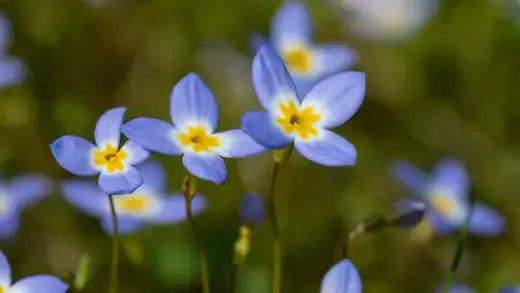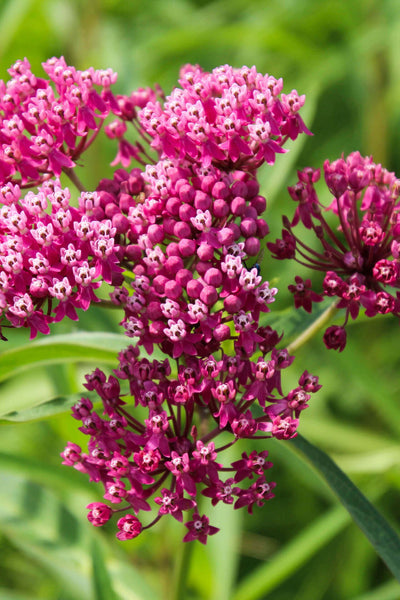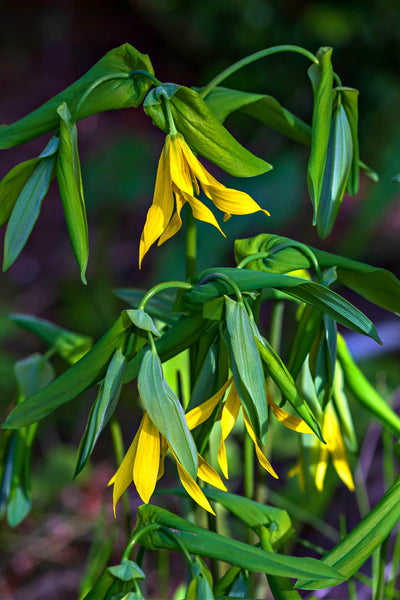Blue Plants: A Delicate Perennial Beauty
In the realm of horticulture, the allure of blue-hued plants is undeniable. With their soothing and captivating shades, these delicate perennials have captivated the hearts of gardeners and nature enthusiasts alike. The ethereal beauty they bring to gardens, landscapes, and indoor spaces is enchanting. In this exploration, we delve into the world of blue plants, their characteristics, significance, and cultivation, uncovering the secrets behind their enduring popularity.
The Enigmatic Allure of Blue Plants
Blue is a color that symbolizes tranquility, depth, and serenity. When translated into the realm of plants, it evokes calmness and introspection. Blue plants are a rarity in the natural world, making their presence even more cherished and coveted. The subtle elegance of these plants complements a wide range of settings, from vibrant gardens to minimalist interiors.
The captivating beauty of blue plants stems from the unique pigments that lend them their distinctive hue. Anthocyanins and flavonoids, the compounds responsible for these shades, play a pivotal role in the plant's adaptation to environmental stressors. These pigments, often found in the plant's petals, leaves, and stems, are responsible for the blue coloration and offer protective benefits against U.V. radiation and herbivores.
Variety of Blue Perennials
The realm of blue plants offers various options, each possessing its charm and character. One beloved example is the "Gentiana," commonly known as Gentian. This perennial boasts stunning blue trumpet-like flowers that grace gardens with their vibrant color and elegance. Gentians come in various species, each adapted to different climatic conditions, making them a versatile choice for gardens worldwide.
Delphiniums are another perennial favorite, with their towering spires of blue blooms. These majestic plants are available in shades ranging from pale sky blue to rich indigo, offering a delightful spectrum of blue. Delphiniums are known for their vertical growth, adding dimension and drama to floral arrangements and garden landscapes.
The "Campanula" or Bellflower family is an excellent option for those seeking blue plants suitable for ground cover. These plants spread low to the ground, adorned with delicate bell-shaped blue flowers. They create a picturesque carpet of blue, perfect for adding a touch of charm to rock gardens or borders.
Cultivating Blue Perennials
Cultivating blue perennials requires careful consideration of their unique requirements. While the allure of these plants is undeniable, they can pose particular challenges due to their specific needs.
- Soil and Light: Blue plants thrive in well-draining soil that is slightly acidic to neutral. Ensuring proper drainage is crucial to prevent root rot. Blue perennials prefer full or partial sunlight, although some shade-tolerant varieties exist. Understanding the light requirements of the chosen species is essential for their successful growth.
- Watering: Adequate watering is essential for the healthy growth of blue perennials. However, overwatering can lead to issues such as root rot. Striking a balance between maintaining soil moisture and preventing waterlogged conditions is critical.
- Pruning and Deadheading: Regular pruning and deadheading help prolong the blooming period of blue perennials. Removing spent flowers redirects the plant's energy towards new growth and encourages continuous flowering.
- Winter Care: Some blue perennials might require winter protection depending on the climate. Mulching around the base of the plant helps insulate the roots from harsh winter conditions.
- Companion Planting: Blue perennials harmonize well with various other plant species. When planning a garden bed, consider complementary colors and textures that enhance the visual appeal of the blue blooms.
Cultural and Symbolic Significance
Throughout history, blue plants have held various cultural and symbolic meanings. In many cultures, blue is associated with tranquility, spirituality, and calmness. Blue flowers, in particular, have been used to convey a sense of serenity and inner peace.
In the language of flowers, blue blossoms often symbolize loyalty, wisdom, and trust. They are frequently exchanged as gestures of friendship and are present in bouquets celebrating milestones and achievements.
Moreover, blue plants have also found their way into art, literature, and symbolism. From classic paintings to modern poetry, the delicate charm of these plants has inspired countless artistic expressions.
Preserving the Beauty of Blue Plants
As the natural world faces the challenges of climate change and habitat loss, preserving blue plants becomes a matter of significance. Conserving biodiversity and protecting the habitats of these delicate perennials is essential to ensure their survival for generations to come. Additionally, cultivating blue plants in gardens and landscapes can serve as a way to raise awareness about their beauty and the importance of their conservation.
Conclusion
The allure of blue plants is a testament to the harmonious relationship between color and nature. Their delicate perennials enchant with their captivating hues and symbolic meanings. Cultivating and caring for these plants requires a deep understanding of their needs, but the rewards are well worth the effort. As we celebrate the beauty of blue plants, let us also commit to their preservation, ensuring that their delicate elegance continues to grace our world.


